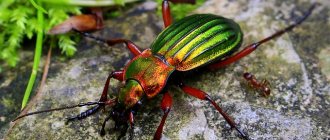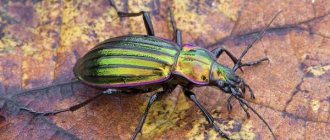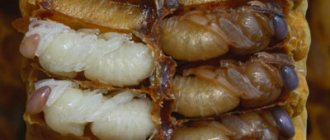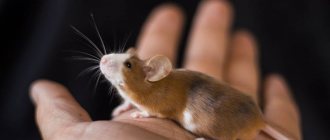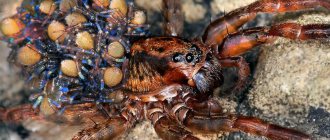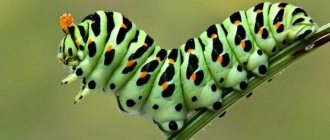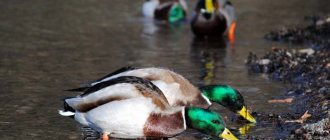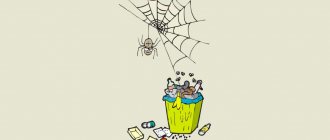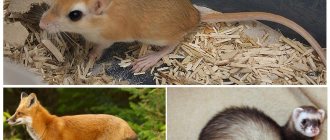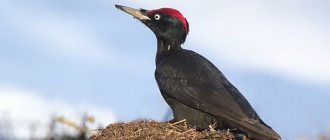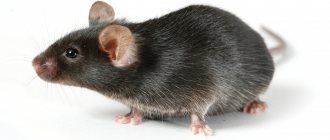Caterpillars can make excellent pets for both children and adults. Butterflies can also please you if you create the appropriate conditions for them.
House for caterpillars
Making a house for caterpillars is very simple. It just needs to be large, with good ventilation, closed on all sides and safe. It must be at least three times the length of the track.
A box for 10 caterpillars, 6 centimeters long, should have a minimum area of 25 by 25 centimeters.
Each caterpillar should be able to eat without touching other caterpillars. As a rule, caterpillars do not actively move, except in search of food or a place to pupate.
There should be no sharp edges or objects in the box that could cause the track to get stuck.
There is no need to decorate the box with anything; it is better to put leaves there. You can line the bottom of the box with thin paper to absorb water and waste.
What to feed caterpillars
Caterpillars eat a lot. Just feed them fresh plants. Caterpillars eat one or more different types of leaves. Instead of feeding the caterpillar one type of leaf, it is better to try to diversify the caterpillar's menu.
If the caterpillar is small and does not eat much, you can feed it leaves placed in a glass of water or simply place them at the bottom of the box. In the latter case, you will have to change food more often, since the leaves quickly wither without water.
How to care for a caterpillar's house
Caterpillars eat only fresh and juicy leaves. They constantly need water to keep their skin constantly hydrated. The best way to give a caterpillar water is to wash the foliage you give them to eat.
Drops of water from washing the leaves will be enough for the caterpillars.
The temperature in the box determines their health and growth rate. At lower temperatures, caterpillars will develop more slowly and this can be detrimental to their health.
You must clean your caterpillars' house every day, otherwise it will soon become moldy and very dirty. You can simply wipe the house with paper and change the litter. When cleaning, you should also remove all old leaves and leaf stems.
Any caterpillar is the larva of an insect belonging to the order Lepidoptera, that is, butterflies, moths, and moths. In appearance, they look like worms of different sizes and colors, covered with fluffy hairs or bare. Let's look at what caterpillars eat, what kind of life they lead, and other interesting facts about them.
Appearance and anatomy of an insect
Caterpillars are not an independent group of numerous representatives of the fauna. These are larvae of representatives of the order Lepidoptera. Answering the question whether a caterpillar is an insect or not, we can unequivocally answer that yes, because this is a certain, that is, the larval stage of its development. Butterflies are distributed almost throughout the planet, especially in places where flowering vegetation grows. It is very rare to find insects in cold latitudes, as well as deserts and lifeless highlands. Not too many butterflies live in temperate climate zones.
The largest number of Lepidoptera are found in hot tropical zones, where the most favorable conditions for their life activity are found. Several hundred varieties of caterpillars are common in Russia.
The biology of the caterpillar is complex and diverse. To determine the type of insect, first of all you need to pay attention to its color, body size, number of limbs, length and thickness of hairs, feeding habits, as well as other specific features. Depending on the variety, the length of the pest ranges from a few mm to 12 cm. The body of the insect includes: a head, 3 thoracic and 10 abdominal parts with paws located on them.
Caterpillar structure
The caterpillar's head consists of 6 parts fused together, resulting in a dense capsule.
- The area between the eyes and forehead is conventionally called the cheeks. In its lower part there is a hole, which in its configuration is similar to a heart.
- For most insects, a round shape is typical. However, some varieties have triangular, rectangular or heart-shaped heads.
- Caterpillars, like other insect larvae, have a primitive brain. The parietal regions can protrude significantly above the surface of the body, forming a kind of “horns”.
- On the lateral surfaces of the organ there are miniature antennae.
- Looking at the structure of the caterpillar, it is clear that all insects are distinguished by their gnawing mouthparts. They have well-developed upper jaws, which are equipped with teeth that allow them to gnaw and tear food. Inside the oral cavity there are tubercles with which insects chew food. The salivary glands are a specific spinning machine that allows the silkworm to form a thread. The lower jaws and lip are fused into a single complex.
Structure
Most have cylindrical bodies composed of several segments, with three pairs of true legs on the thorax and several pairs of short, thicker false limbs on the abdomen. The head contains six pairs of small eyes (stem eyes) that function in detecting light but not in forming images. They have short, segmented antennae and strong jaws. Many caterpillars in the order Lepidoptera are called worms, such as the silkworm (silkworm) and the army worm (Spodoptera frugipeda).
You may be interested in:Swedish Lake Mälaren: location and main attractions
Life cycle
In their development, all representatives of the order Lepidoptera go through 4 stages: egg, caterpillar, pupa, butterfly. After mating, female insects lay eggs, which can develop from several days to months. The duration of the period depends on temperature conditions. The caterpillar easily gnaws through the shell of the egg. Under unfavorable weather conditions, the larva overwinters in the egg and only when spring comes does it emerge. Hungry caterpillars often eat the remains of their “shelter.”
How long do caterpillars live is a question that can be found quite often on the Internet. The duration of this phase of insect development depends on the species and can last several days or years. This is due to the fact that northern butterflies hibernate without completing their development cycle.
The moth, which lives in harsh northern regions, can remain in the caterpillar stage for about 14 years.
The caterpillar has several phases of development. They are characterized not only by changes in the color and size of the insect, but also by certain structural features. During its life, an insect undergoes a certain number of moults, which depend on its membership in a particular biological species. Typically, the larva molts 4 times; for representatives of certain species, this number can vary from 5 to 7. Under unfavorable external conditions, the growth period of the insect is prolonged, and the number of molts increases.
The clothes caterpillar can molt 4 or 40 times.
Before this process begins, they stop feeding, become motionless and hide in secluded places. Their skin stretches and their head seems to shrink in size. Having shed the old shell, the caterpillar can eat it. Having gone through all stages of molting, insects move on to a new life stage.
Pupation of the caterpillar can occur in inaccessible places or directly on the plant on which the larva fed. Under certain conditions, insects travel considerable distances in search of protected places. Later, a butterfly emerges from the pupa.
Second stage of development
Caterpillars are very insatiable creatures. They go through various growth phases during their development. Apolisis is the process by which the caterpillar sheds its cuticle, an outer layer of protein and chitin. By the time the last growth phase is reached, wing development begins.
Caterpillar legs are of two types, that is, true and false. If there are only three pairs of the former, then there can be six of the latter on the body
The second and third thoracic segments of the caterpillar's body have wing discs. Their development is associated with the trachea. They grow rapidly during the last stage of this phase. Hemolymph gradually displaces the wings through the epidermis.
How does a caterpillar live and what does it eat?
For most species of caterpillars, the characteristic habitat is the surface of the earth, but there are individuals that prefer water spaces.
Hawaiian moth larvae are distinguished by their unique ability to exist both in the air and under water.
Depending on their preferred living conditions, caterpillars are divided into 2 categories - those leading a hidden and free lifestyle. In accordance with this classification, it is easy to determine where certain insect larvae live. Those leading a hidden existence include the following representatives of caterpillars: leafworms, underground ones, miners, etc.
Representatives of the second group live freely on the vegetation they destroy. This is how green caterpillars eat plants, and camouflage coloring allows them to hide from external enemies.
Their diet, depending on whether they belong to a particular species, is quite varied. The hatched larva first eats the shell of the egg, and then moves on to its usual diet. Caterpillars feed on leaves, flowers and fruits of plants. However, in nature there are insects that prefer other types of food. In accordance with this feature, the larvae are divided into the following 4 groups:
- polyphagous - feed on any vegetation;
- oligophages - prefer plants of a certain type;
- monophagous - eat a strictly defined type of plant;
- xylophages - consume only wood.
Mechanical impact
Mechanical impact is the simplest available and safest control method, which includes not only dropping pests from trees and collecting them manually, but also removing overwintered nests and oviposition. Collecting caterpillars by hand must be done with protective gloves, as many larvae have bristles that protect them from enemies.
However, such manipulations will have a positive effect in case of minor infestation of trees or other plantings by caterpillars. If there are already too many insects, fighting caterpillars in the garden will not give the desired results. This method is not suitable for tall trees either.
What do caterpillars and their larvae eat?
The caterpillar, hatched from the egg, first of all eats its shell, inside which it developed. Most of these creatures are herbivores; they feed on leaves and plant fruits. But there are also predators that eat sedentary insects, scale insects. Unlike butterflies, these insects eat solid food and therefore have strong gnawing jaws. The upper jaw is more powerful; there are teeth with which it chews food.
Insects consume leaves in such a way that it is easy to determine which larvae fed there. Small-sized individuals gnaw only the upper or lower part of the leaf. They leave transparent slits of intact thin skin.
Due to the fact that the hatched larvae immediately begin to feed heavily, the integument, which does not stretch, soon becomes small. The insect is forced to stop feeding for a while and shed its skin. During its life, the caterpillar molts 4-5 times.
Necessary conditions of detention
Creating a homemade butterfly farm is a good gift for a child who will be able to watch the birth and formation of living creatures. A real tropical fairy tale unfolds before his eyes, because many types of butterflies have a colorful color.
In addition to a gift for a child, an insectarium (or, as it is also called, a “butterfly garden”) is an opportunity to build your own business by breeding these insects. Butterflies can be sold for holiday events, and the initial investment can pay off fairly quickly.
But the first thing you need to know is how to care for a butterfly at home? In order for them to feel comfortable, the humidity inside the insectarium must be maintained at 70-90% at a temperature of 24 to 26 degrees.
To tie the dolls you will need sticks (the distance between them is 15 cm). Maintaining distance is necessary so that nothing prevents butterflies from spreading their wings at birth.
Classification of larvae
The digestive tract of these creatures is concentrated at the back and front of the body. This helps you digest food calmly even while moving. Their digestive tract secretes enzymes that help them process food easily. Scientists classify the larvae depending on what the caterpillar eats.
Polyphages - eat plants
These insects are polyphagous, as they consume any plant for food, indiscriminately. These include moths (moth, wine hawk moth, peacock eye). The advantage of polyphages is that they exist with an unstable food supply. Weakness: poor digestion of food.
Oligophagous - eat plants of a certain type
They prefer to eat one type of plant, one family or type, and do not allow mixing. These include the polyxena species, which feeds only on some of the genus Kirkazon, and the Mahayana larvae only on celery. Or the codling moth, which eats apples and plums.
Monophagous - eat a strictly specific type of plant
These are the most selective individuals who prefer to eat one type of plant. An example is the silkworm larva, which eats only mulberries.
Xylophages - eat wood
Wood is the only thing the caterpillar of this species feeds on. Xylophages make up a minority, compared to other species, their number is insignificant. They gnaw tunnels in tree trunks and branches. The roots of herbaceous plants can act as food due to their woody composition.
Interesting Facts
Source
Do caterpillars eat leaves and meat of small insects?
Caterpillars find food by smell and taste. Most of these creatures feed in one place until the entire tree or bush is eaten. If all the food is gone and there is no food left nearby, the larva pupates underfed. A small butterfly will later emerge from it.
Caterpillars not only feed on flowers, leaves and wood; some eat meat. Cases of predation can be considered an exception to the rule rather than a pattern. Predation occurs during cohabitation and when there is a lack of food. Weak and sick individuals become food. Some herbivorous representatives attack other caterpillars in the presence of plant food (narrow-winged moth, raspberry moth).
Blueberry individuals sometimes eat aphids. The larvae, found in Hawaii, eat insects. They use silk thread traps to catch snails.
Pupal phase
This is an intermediate stage between the larva and the adult butterfly. When the caterpillars turn into pupae, they stop feeding and look for substrate for their final molt. As the pupal stage approaches, a metamorphosis hormone is produced, which ensures a change in developmental phases. Wings undergo rapid mitosis, so this stage requires a lot of nutrients. To protect themselves from predators, pupae make certain types of sounds.
Who can eat caterpillars?
Caterpillars are rich in proteins, so many animals feed on them. Representatives of this family develop means of protection against such situations. Insects that live in plain sight have colors that allow them to blend in with their environment. Poisonous and inedible larvae, on the contrary, try to stand out and have bright colors. Animals or birds that once tasted a tasteless caterpillar will no longer touch an insect of a similar color.
Scientists have discovered that Japanese caterpillars are protected by Asian ants. When wasps or spiders noticeably approach, the ants rush to attack. They guard them day and night, and in return the caterpillars feed them sweet mucus. The glands that are located next to the tentacles secrete chemicals that have a narcotic effect on the ants. This is also one of the ways to protect against predators.
Living creatures that feed on caterpillars:
- Wasps. Larvae are included in the diet of not only adults, but also their offspring. These insects eat all caterpillars except hairy ones.
- Spiders. They will only eat this insect if it is small in size.
- Birds. Cuckoos feed mainly on large, hairy individuals. All insectivorous birds eat butterfly larvae. These include: woodpeckers, sparrows, nightingales, magpies, etc.
- Reptiles (lizards, snakes). They are unable to bite off and chew food, so they swallow it whole. Later they regurgitate what they could not digest.
Caterpillars of corydalis and swallowtails, in order to protect themselves from attacks by these predators, in a dangerous situation, extend an orange-red fork-shaped gland from their bodies. This gland secretes mucus with a pungent odor.
Hawkmoth caterpillars, when danger approaches, emit a whistle that can be compared to ultrasound. The spectrum of this sound has 8 different frequencies. Most larvae are colored to match the color of tree leaves or bark. Their muscles are so developed that they are able to remain motionless for a long time, clinging to a branch with their hind limbs. Those who do not have an advantageous coloration adopt various unusual poses so that predators do not notice them.
Caterpillars can be eaten not only by predatory inhabitants of the animal world, but also by humans. They are high in protein, so they are eaten raw and cooked. These insects have been considered as food since prehistoric times.
Countries where caterpillar food is popular:
- China. The Chinese give preference to the silkworm. They are salted, added to scrambled eggs and prepared in many delicious dishes.
- India. In a year, 19 tons of caterpillars are eaten in this country.
- Australia. The inhabitants of this country prefer a variety of wood borer, which can be found in the roots of acacia flowers.
- Africa. Peacock eyes are considered a delicacy. They cost several times more than meat. They are consumed fried and smoked. During the season when these insects appear, sales of meat and fish drop by 4 times. Africans eat 1,600 tons of butterfly larvae per year.
- Botswana. In this republic, larvae are popular in dried form, and are sold like any other dried product.
There are no completely naked caterpillars; each has outgrowths, cuticles or hairs. Despite its good defensive ability, the larva still becomes food for birds, insects or people.
The structure of caterpillars and their food preferences are unique. Most prefer plant foods, but there are also predatory representatives of this family. Each species has its own interesting features.
- Author: Maria Sukhorukikh
Rate this article:
- 5
- 4
- 3
- 2
- 1
(3 votes, average: 4.7 out of 5)
Share with your friends!
Habitat
The limited mobility of caterpillars does not facilitate their movement over long distances. In most cases, insects lead a terrestrial lifestyle, but there are also species that live in water.
All caterpillars are divided into two main groups: hidden and leading a free lifestyle. The former practically do not appear on the surface and live in the bark or in the ground away from sunlight. The latter are found on plants and are active during the daytime.
Habitat
In nature, many insects and animals feed on caterpillars. This is due to their high protein content. Therefore, the color of insects living on plants has a camouflage color, which allows them to blend in with the surface of the leaves. Poisonous butterfly larvae are characterized by a frightening bright body shade.
Among those who eat caterpillars:
- wasps;
- spiders;
- birds;
- reptiles.
To protect themselves from attacks from predators, some butterfly larvae are capable of producing a whistle and protruding from their body a fork-shaped gland of a red-orange hue, which secretes mucus with a pungent odor.
Use of chemicals
Insecticide-based chemicals are the most effective in combating voracious butterfly larvae. You can poison caterpillars in your garden using the following drugs:
The use of chemicals can cause intoxication of the human body after consuming processed fruits, so it is necessary to strictly adhere to the manufacturer’s recommendations. The fight against caterpillars on flowers through the use of pesticides is carried out only in cases of the most advanced stage of infection.
How to deal with cabbage pests?
Manual collection
There are many ways to combat caterpillars, depending on your preferences. Some people prefer to collect caterpillars by hand. This is a rather labor-intensive, time-consuming and not particularly effective method. In this case, it is necessary to inspect the cabbage foliage more often for the presence of caterpillars and the eggs they lay. It is important to start the fight as soon as you notice the first butterflies. If eggs are laid, it is difficult to remove the inside of the head of cabbage.
Chemicals
Chemicals solve the problem with caterpillars quickly and radically. But this method has one big disadvantage - it is still a chemical, which is not harmless to health. Insecticides kill pests quickly, but repeated treatment is necessary to consolidate the result. If you decide to use these products to control pests, then you need to use them a month before harvest.
The following insecticides are used for treatment:
Before getting rid of caterpillars on cabbage heads, you should carefully read the instructions for the preparations. Chemical and biological insecticides pose a potential danger to the health of people and domestic animals; they are also quite toxic to “beneficial” insects, such as bees. If there are signs of drug poisoning, you should seek medical help!
Folk remedies
Measures to combat the white moth and cutworm are similar. But is it worth spending money on insecticides for cabbage if folk remedies are no worse, and sometimes more effective. Moreover, their effectiveness has already been tested by many gardeners. Here is a small selection of folk remedies that will help you cope with caterpillars on cabbage.
Cabbage butterfly
Caterpillar of the cabbage butterfly (cabbage white butterfly) living on white cabbage. It feeds on leaves, which are then full of holes. Moreover, the larvae can move deeper into the head of cabbage and settle there firmly.
cabbage butterfly and its caterpillars
Measures to combat cabbage weeds
You can try spraying the cabbage with an infusion of tomato tops and onion peels. Insecticides also help: “Aliot”, “Herold”.
